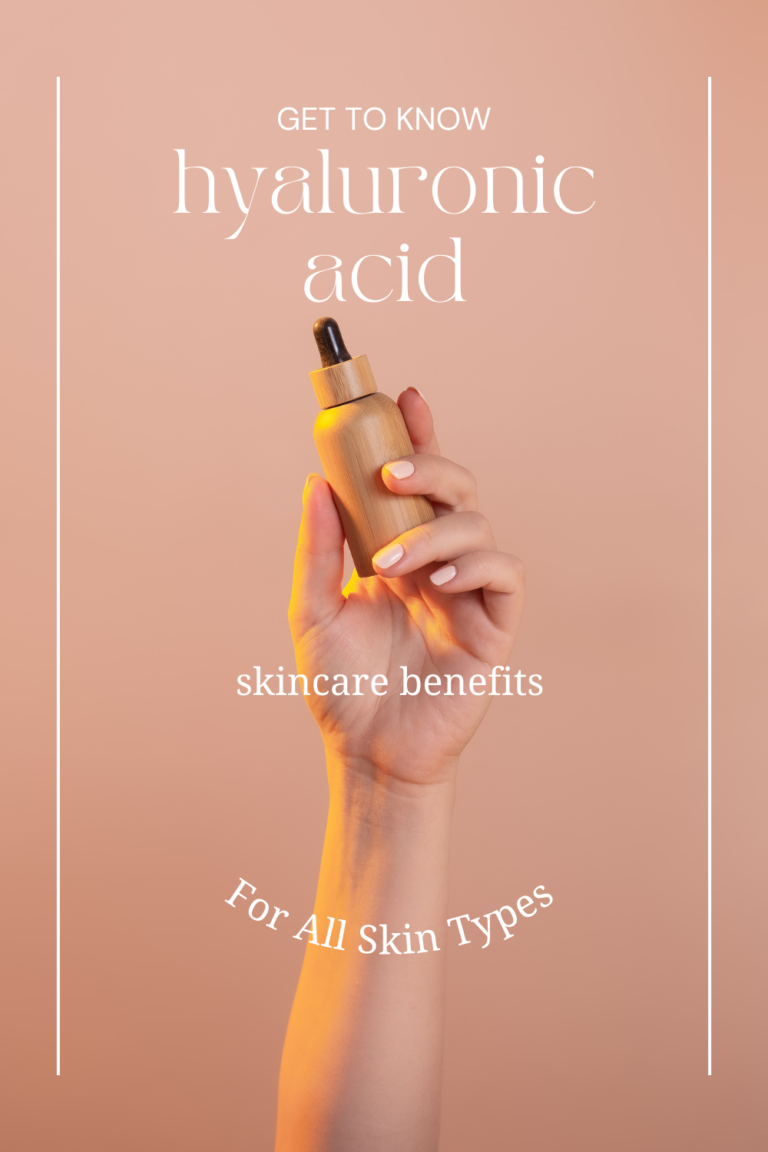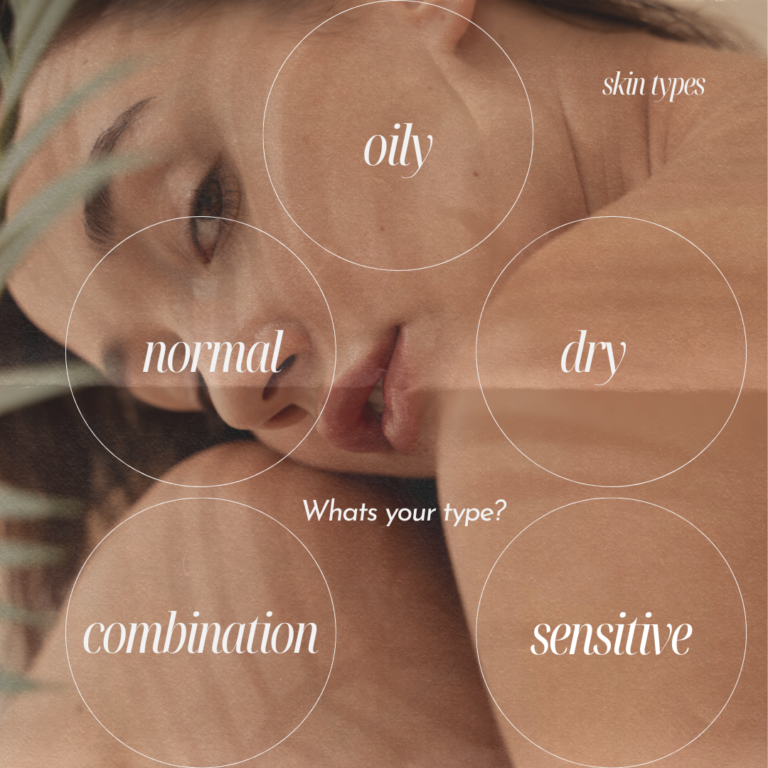How to use Vitamin C + Hyaluronic Acid in Your Skincare Routine

In the world of skincare, finding the right ingredients and their ideal order of application can sometimes feel like solving a complex puzzle and somewhat overwhelming since you want to make sure you are getting the most out of your skincare invest. Two ingredients that often find their way into our skincare collection are Vitamin C and Hyaluronic Acid. But how should you incorporate these powerhouses into your routine for optimal results, and when? Let’s get a better understanding of the science-backed order that will make your skincare routine benefit the most like a well orchestrated symphony.
Chapter 1: The Perfect Pairing – Vitamin C and Hyaluronic Acid
Before we delve into the order of application, let’s understand why these ingredients are worth all the buzz.
- Vitamin C: This potent antioxidant is renowned for its ability to neutralize free radicals, brighten the skin, stimulate collagen production, and even out skin tone. It’s your shield against environmental damage and aging. BLT= Brighten, Lighten, Tighten! Thank you I will take 2 please 🙃
- Hyaluronic Acid: The hydration hero! Hyaluronic Acid is a moisture-retaining molecule that hydrates the skin by binding water. It plumps the skin, reduces the appearance of fine lines, and provides a dewy, youthful glow. Hola Smooth Operator!
Chapter 2: The Ideal Morning Sequence – Vitamin C First
Here’s the golden rule: Apply Vitamin C before Hyaluronic Acid. Why? So glad you asked….
- Vitamin C Needs a Clean Canvas: Start with a clean face to allow Vitamin C to work effectively. Gentle cleansing removes impurities, allowing Vitamin C to penetrate the skin’s surface. (Keep in mind we are not trying to dry out the skin in the morning with any harsh cleansers. A nice micellar cleanser works perfectly in the morning.)
- Antioxidant Armor: Vitamin C provides antioxidant protection against environmental pollutants and UV damage. Applying it first creates a shield to guard your skin throughout the day. It helps to defend against oxidative stress and damage caused by these daytime aggressors. We are only preparing for battle everyday and every time we step out into the world.
- Brightening and Even Tone: Vitamin C works to fade dark spots and even out skin tone. Applying it directly on clean skin allows it to target these concerns directly. Using it in the morning allows you to enjoy its brightening benefits throughout the day. Did I mention it helps with fading and blocking any new pigment from reaching the surface?
- Collagen Boost: Vitamin C stimulates collagen production, which is essential for skin firmness and reducing the appearance of fine lines and wrinkles. Applying it in the morning ensures that your skin benefits from this collagen-boosting effect throughout the day. By applying it first, you maximize its collagen-boosting benefits. Now for your skin BLT! Brighten, Lighten, and Tighten.
- Enhanced Sun Protection: While Vitamin C is not a replacement for sunscreen, it can enhance the effectiveness of your sunscreen. It complements sunscreens by providing additional protection against UV-induced damage and may help reduce the risk of sunburn. Yes and please, sunburns are not fun.
Chapter 3: The Harmonious Hydration – Hyaluronic Acid Follows
Now that your skin is fortified with Vitamin C, it’s time for Hyaluronic Acid to shine:
- Deep Hydration: Hyaluronic Acid’s moisture-attracting magic complements Vitamin C’s antioxidant power. It locks in moisture, ensuring your skin stays plump and hydrated. (Plus its usually very lightweight in a serum making it just glide on without feeling like you have an extra layer of product: fun fact.)
- Smooth Operator: As it hydrates, Hyaluronic Acid helps reduce the appearance of fine lines and makes your skin feel smooth and supple. Perfect for those who have an oily skin barrier and want less yet more out of your products.
- Barrier Protection: Hyaluronic Acid also aids in fortifying your skin’s natural barrier, ensuring that moisture is sealed in and environmental aggressors are kept at bay. Ideal for those with drier skin types seeking something they can add to help feel hydrated and moisturized through out the day and not just for a few minutes.
Chapter 4: The Complete Morning Routine
Here’s your step-by-step guide for incorporating Vitamin C and Hyaluronic Acid into your morning skincare routine:
- Cleanser: Start with a gentle cleanser to prepare your skin. Micellar water is a good fit.
- Toner (if used): Apply your toner if it’s part of your routine.
- Vitamin C Serum: Gently massage your Vitamin C serum onto clean, dry skin.
- Hyaluronic Acid Serum: Wait a few minutes for the Vitamin C serum to absorb fully, then follow with your Hyaluronic Acid serum.
- Moisturizer: Seal in the goodness with your favorite moisturizer or moisturizer with SPF in it already for one less step look for a BB cream that has tint, moisturizer, and SPF built in.
- Sunscreen (Morning Routine): In the morning, finish with a broad-spectrum sunscreen if you do not have a moisturizer or BB cream with built in sunscreen. And Ta-Da!
By following this order, you’ll orchestrate a symphony of benefits for your skin, from antioxidant protection and brightening to deep hydration and a youthful glow. It’s the perfect duo, creating harmonious skincare magic.
While Vitamin C is commonly used in the morning, your nighttime skincare routine is also crucial for skin repair and rejuvenation. You can focus on other active ingredients like retinoids, peptides, or hyaluronic acid in your nighttime routine, depending on your specific skincare goals and concerns. Remember thinnest to thickest for product application.
Hyaluronic acid is a versatile skincare ingredient that can be used both in AM and PM, just depending on your specific skincare routine and needs. Here’s a little breakdown of why hyaluronic acid can be beneficial at different times of the day:
Morning Use:
- Hydration and Moisture Lock: Applying hyaluronic acid in the morning can help provide an initial surge of hydration to your skin. It attracts and holds onto water, making your skin look plump and dewy. This can be especially beneficial if you have dry or dehydrated skin.
- Smooth Makeup Application: Hyaluronic acid’s hydrating properties create a smooth canvas for makeup application. It can help foundation and concealer go on more evenly and reduce the appearance of makeup settling into fine lines. Matte is no longer in these days.
- Daytime Hydration: Hyaluronic acid acts as a moisture magnet, helping your skin retain hydration throughout the day. This is particularly useful if you spend time in a dry or air-conditioned environment, which can sap moisture from your skin.
Night Use:
- Intensive Hydration and Repair: Applying hyaluronic acid at night allows it to work its hydrating magic during your skin’s natural repair and regeneration process. Your skin goes through a restorative phase while you sleep, and hyaluronic acid can support this process by delivering deep hydration during that phase of repair each night.
- Combination with Other Actives: If you use other active ingredients like retinol or peptides in your nighttime routine, hyaluronic acid can complement these by providing a soothing and hydrating layer. It can help mitigate any potential dryness or irritation caused by these actives, especially retinols or any Vitamin A products which can dry out the skin.
- Anti-Aging Benefits: Well-hydrated skin appears plumper and can minimize the appearance of fine lines and wrinkles. Using hyaluronic acid at night can contribute to a more youthful and radiant complexion. Keep in mind that restorative and repair phase that occurs while you sleep.
Note: Some people may experience mild sensitivity when using Vitamin C, especially if they have sensitive skin. If you’re new to Vitamin C or have sensitive skin, it’s a good idea to start with a lower concentration and gradually build up to daily use. Consider introducing one product at a time if you are new to both Vitamin C and Hyaluronic acid and gradually building up to using both in your routine. This can help minimize the risk of skin irritation. Remember everything is about building a consistent routine and good habits.
In summary, hyaluronic acid is suitable for both morning and nighttime use, and its benefits can be maximized depending on your skincare goals and concerns. Many people incorporate it into both their morning and evening routines to enjoy round-the-clock hydration and skin-plumping effects. It’s essential to prioritize consistency and choose a routine that aligns with your skin’s unique needs and sensitivities. Ultimately, the use of Vitamin C in the morning is a well-established practice in skincare, but the most important thing is consistency and finding a routine that works best for your skin’s needs and preferences. Give yourself some grace while you are in the learning phase and give yourself credit for caring about your skin, you will get there, starts with one facial product and day at a time. 🌟💧

meet
Davina, your skin skills gal, and go-to esthetician enthusiast. I’m here to guide you on a journey to radiant skin and healthy skin. Join me as we explore the world of skincare with a relatable twist. Let’s dive into the world of aesthetics together, one glowing complexion at a time. 💆♀️💄✨ #skinskillsbyDavina
Want an in depth read on Vitamin C
or






